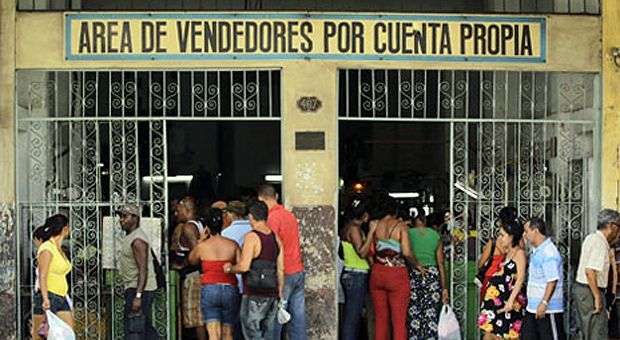Josefa Hernandez is surprised. It was much easier to visit this Sunday her daughter and grandson in the village of San Jose de las Lajas, Mayabeque, about 25 km from Havana. Public transportation,consisting of small passenger trucks (“semi -buses”), is essentially the same, but something has changed.
Instead of making you wait for hours, the trucks are “one behind the other ,” she says.
And the way of management has also changed: from the state to cooperative.
These means of transportation now belong to one of the 124 non-agricultural cooperatives that have joined recently the independent sector of the Cuban economy. This is a measure qualified as “bold”by analysts, which benefits, in addition to the service consumers, to the cooperative members and the state, which is released from productive activities which are not fundamental and have not beenefficiently developed so far.
Areas such as construction and services are also linked to this initiative. However, some others, such as those belonging to artistic industry or computing must continue waiting.
“I thought that our Government had already approved something that is actually functioning in a cooperative way for so long like the audiovisual production companies, ” Alejandro says, young graduate from the Faculty of Arts of the Audiovisual Media of the Higher Institute of Art.
Meanwhile, Fernando Rojas, Deputy Culture Minister told recently in an interview to OnCuba that the topic of cultural cooperatives is still in a very early stage of discussion.
“The cultural sector has a business model that has proved being successful, “he said.” I think the business management will become more efficient and flexible in its relationship with the artist. “
The implementation of non-agricultural cooperatives is another step in the process of transformations derived from the Guidelines for the Economic and Social Policy, adopted in April 2011, and proposes modifying old guiding principles and procedures of the Cuban economy, associated with exclusive state ownership or centralization. However, for some, this document does not reflect clearly the model to which Cubans aspire and the way and time to get it.
“There might be a strategy, but we do not know it. I do want to have more clear where my country goes and what steps will be given for get it, ” Alexis, a graduate of social communication in the Havana University, says.
It is true that there is no rush for now. “There is a long and complex way to update our economic and social model,” President Raul Castro noted in a recent speech in the National Assembly.
Some changes are already noticeable in everyday life. The restrictions that Cubans suffered for a long time to travel, having a cell phone under their own name, staying in hotels or selling their own houses and cars, are history. All this is happening and at the same time the number of self- employed persons reaches nearly half million.
But the GDP growth of 3 percent during last year is not still useful for ordinary Cubans, who continue trying to survive with a definitively insufficient salary.
“I earn almost 700.00 Cuban pesos (CUP), and that is because I have two specializations and a master’s degree”, Mariela, a surgeon tells. “But I have to buy almost everything in CUC (convertible currency), so I only earn at about 30.00 CUC. As you see I have to make miracles”.
This situation, generalized in state jobs, is one of the main causes of the inertia shown by many towards work. Raul Castro himself has repeatedly talked about the impossibility of increasing wages if there is not productivity and referred to monetary duality as “one of the most important obstacles for the progress of the nation.¨ But many of those earning a state payroll see the problem from their own perspective. “I spend all I earn when going twice for food to the agro-market. Salary is not enough to think ofclothes, holidays, and much less on saving “Yohan, an accounting graduate adds.”I do not think that productivity can grow this way, and without producing more, wages can not be increased. It’s likethe story of the chicken or the egg “.
Leonardo Padura , one of the most important Cuban writers, summarizes: “The Cuban Government is implementing a reform and we can not have an economic future without it, and that is the solutionto the trap of the double currency, which existence deforms all levels of the economy, from the macro to the domestic one.”
Others, like the young economist Pavel Vidal, specializing in financial subjects, said that “the circulation of two currencies, the overvaluation of the official exchange, the exchange rate duality and theinconvertibility of the CUP for companies are closely related elements that should be almost simultaneously solved. “
Experts and authorities agree in the complexity to readjust the Cuban economic and social development. Meanwhile, ordinary Cubans are still hoping that sooner or later, the upgrade of this model alsomeans a substantial increase in their living standards.










